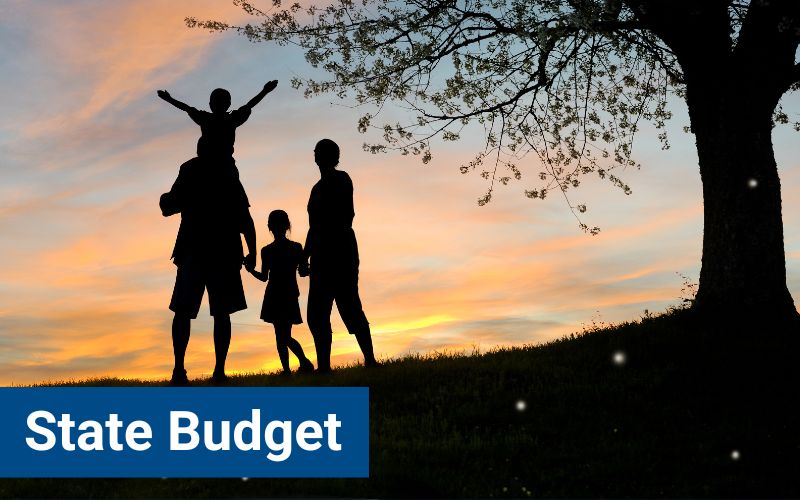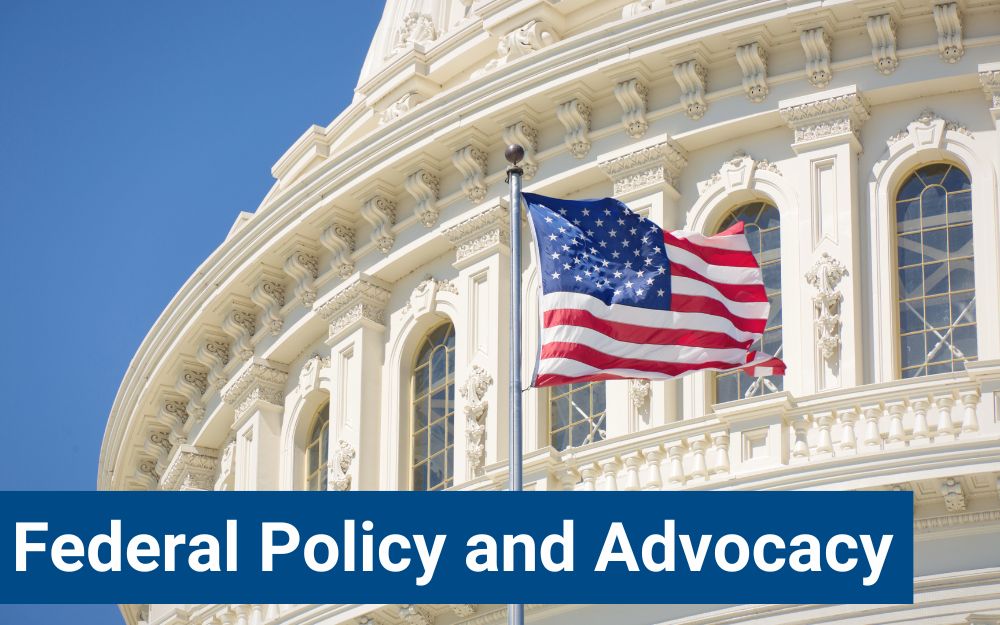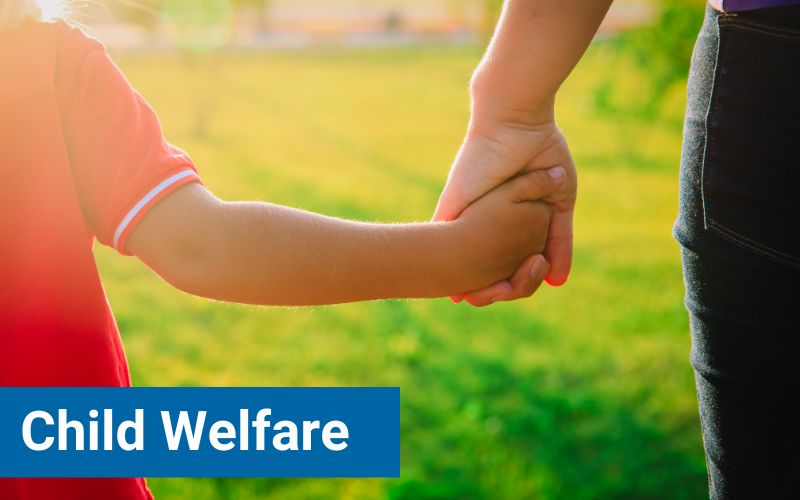
by Schuyler Center | May 6, 2024 | News, NYS Budget
On April 22, 2024, the New York State Legislature and Governor reached an agreement on the 2024-25 New York State Budget. Schuyler Center’s Last Look report is our initial assessment of the enacted State budget and how it advances priorities that improve the health and well-being of all New Yorkers, especially children and families living in poverty.
Read the Last Look report.
This year’s budget is a story of partial solutions at a time when thoughtful and systemic investment is needed. With a few notable exceptions, the handful of new investments to support children and families experiencing poverty are time-limited and not designed to build toward a significant, sustained investment in child and family well-being. Among the exceptions: the budget’s inclusion of legislative language to provide continuous Medicaid and Child Health Plus eligibility to young children from birth to age 6. This is a transformative, cost-effective public policy that will make New York more welcoming and affordable for families over the long term.
Looking ahead, Schuyler Center will continue efforts to advance more policies like continuous Medicaid eligibility: cost-effective, impactful, and proven to set up children and families to thrive.
Read the Last Look report.
For additional detail and context, see also:

by Schuyler Center | Apr 25, 2024 | Child Care, Child Poverty, Child Welfare, Health, Legislative, News, NYS Budget
View as PDF.
For 152 years, Schuyler Center has been advancing data-driven, effective, public policy to create a more just, equitable New York, in which all residents thrive. The policies and investments we champion are those proven to prevent children and families from experiencing the hardships of poverty, ill-health, food insecurity and other challenges; policies that stand to transform the public systems that serve and support the well-being of New York’s children, families, and communities over the long-term. By those measures, this budget is disappointing, with nearly all of the potentially transformative investments falling out during budget negotiations.
A handful of new investments directed to supporting children and families experiencing poverty are time-limited and not designed with the intention of building toward a significant, sustained reduction in child and family poverty.
This budget cuts funding for the child care workforce, threatening to worsen the state’s already severe child care workforce shortage and capacity shortfall. It does not transform New York’s child welfare system to better support families. And it does not make New York a more affordable place to raise a family.
Failure to invest in policies that are proven to uplift children and families is not just a failure within a budget bill. There are real consequences. These decisions will be felt by the family whose child care program closes due to staff shortages. They will be felt by the child who cannot buy school lunch, by the young person exiting foster care who cannot afford rent, and by the parent struggling to afford the cost of living in New York State.
There are important bright spots. Chief among them: the inclusion of continuous Medicaid and Child Health Plus eligibility for children aged 0-6. Forty-five percent of New York children are covered by Medicaid and Child Health Plus. Eliminating the requirement for the youngest New Yorkers to re-enroll every year will help ensure children’s access to health services in the most critical years of their development. In addition, a 5% rate increase for Early Intervention providers may help stem the systemwide exodus of providers, which has resulted in gaps in services for young children experiencing developmental delays and disabilities.
We celebrate the budget’s addition of state funds to the state child care assistance program to both fill the hole left by the end of federal pandemic funds, and to expand the program. Also welcome is a small – but important – child care subsidy rate hike for providers offering care during evening, early morning, and weekend hours (known as non-traditional hours), and those serving children experiencing homelessness, as well as an increase in funding for continuing a small pilot project to provide child care assistance to families barred by federal rules from accessing child care assistance due to immigration status, or because they work episodic hours.
Schuyler Center’s assessments around specific policy goals are outlined below.
Goal 1: Child Poverty Reduction — Reduce child poverty and racial inequity, starting by ensuring tax credits, housing, and nutritional supports reach all families, no matter where they were born.
Does the FY 2025 New York State budget meet this goal?
No. The final State budget falls short for low-income families. The budget fails to permanently expand New York’s child tax credit or ensure the lowest income children receive the maximum credit; provide housing supports for low-income New Yorkers; or fund statewide universal school meals.
The budget includes a one-time supplemental payment of the Empire State Child Credit that will provide a boost to New York’s low- and middle-income families this fall. While the supplement’s structure is designed to be progressive, it still leaves the lowest-income families out of the full credit and creates significant cliffs as family income rises.
With a nod to extremely high poverty rates in three upstate cities, the Governor and Legislature agreed to a one-time distribution of $50 million to address poverty in Buffalo, Rochester, and Syracuse.
Too many children and families across the state experience the day-to-day hardships of poverty –struggling to afford rent, food, and daily needs. That is a policy choice, and it was made once again in this budget. The clock is ticking on upholding New York’s commitment to reducing child poverty statewide by 50% by 2033. Another year is gone.
Statement from the New York Can End Child Poverty coalition.
Goal 2: Child Care — Make a substantial and sustained investment in New York’s child care workforce and extend the promise of care to all children in our state.
Does the FY 2025 New York State budget meet this goal?
No. This budget includes a reduced investment in the child care workforce compared to last year – a workforce overwhelmingly composed of women- specifically women of color and immigrant women, a workforce that earns less than 96% of other occupations. These cuts come at a moment when child care programs are already operating under capacity, even while carrying waitlists, because of workforce shortages due to low wages.
This budget also missed the opportunity to ensure that parents who work variable hours in retail, the trades, the gig economy, and food service can access child care by ending the State’s practice of tying child care assistance to caretakers’ exact hours of work—known as decoupling. Legislation to end this practice—which has disproportionately kept low-income, immigrant, and Black and brown New York families from accessing child care assistance—was passed by the Legislature last year and vetoed by the Governor, with instructions for the Legislature to take the issue up in budget negotiations. While the Legislature included this proposal in both one-house budgets, it was removed during final negotiations.
Empire State Campaign for Child Care Statement on the Final Enacted 2024-2025 New York State Budget
Goal 3: Children’s Health — Expand and increase investment in child and family health.
Does the FY 2025 New York State budget meet this goal?
Yes. The final state budget includes authority to seek federal approval for New York to ensure eligible children remain enrolled from birth to age 6 in Medicaid and Child Health Plus (CHP) health coverage — programs which provide no-cost or low-cost health coverage for eligible children.
Continuous health coverage will ensure that the youngest children on Medicaid receive health care during this crucial period of development.
A 5% rate increase for Early Intervention providers, together with a commitment to a 4% rate increase for services in rural and underserved communities, may help stem the systemwide exodus of providers, which has resulted in gaps in services for young children experiencing developmental delays and disabilities.
Goal 4: Child Welfare — Transform the child welfare system by investing in policies that foster transparency and accountability, prevent system-involvement and unnecessary, harmful family separations, reduce institutional placements, and support child, family, and community wellbeing.
Does the FY 2025 New York State budget meet this goal?
No. The final state budget took two small steps towards better supporting young people and families involved in the child welfare system: first, the Foster Youth College Success Initiative (FYCSI) is funded at $121,000 more than last year at $8.3 million, still below the $10 million needed to robustly fund each eligible student. Second, human services programs received a 2.84% COLA, which requires a minimum 1.7% targeted salary increase. This is less than the 3.2% needed to keep up with inflation and leaves out some human services workers (like those working in Preventive Services).
Missing are long overdue investments in Preventive Services and Attorneys for the Child that would strengthen children and families.
Next Steps Toward Investments that Support the Well-Being of New York’s Children and Families
In the two months left of legislative session, we will be working hard to secure passage of a number of laws designed to make the child welfare, child care, and health systems better serve and support families, in a manner that is more just and equitable.
Schuyler Center’s 2024 End of Session Priorities.
We will also be working with state partners to ensure laws are faithfully implemented and that investments committed in prior years are directed properly. A chief area of focus will be to ensure state leaders are on track to fully attain goals set by the Child Poverty Reduction Act, which committed the state to cutting child poverty in half in a decade with attention to racial equity. We celebrated that law not only for its bold vision, but also because it calls for an advisory council guided by data and evidence to make truly transformative – and lasting – policy recommendations. To date, the recommendations of the council have been largely sidelined. We hope and expect that to change.
Healthy children and supported families are the foundation of a thriving society—these are the investments that pay off for everyone, now and for generations to come. We will continue working for transformative policies that will create a New York State that supports strong families, thriving children, and vibrant communities.

by Schuyler Center | Apr 25, 2024 | Child Poverty, Family Economic Security, Legislative
President Biden visits Syracuse today to celebrate the deal that will bring Micron Technologies to town; a deal facilitated in part through the federal CHIPS Act – a law that invests in U.S. semiconductor manufacturing, research and development, and workforce through direct federal investment and robust tax credits. Senator Schumer has touted this deal with Micron as one that should put “a smile on everyone’s face in Central New York.”
It is, indeed, an important investment in the economy of City of Syracuse and the region, promising to create thousands of jobs in the region, and to invigorate the local economy.
We also know there are additional ways federal funding and tax credits can boost local and regional economies, strengthen communities, and support hard-working families. One proven strategy is expanding refundable tax credits, like the child tax credit. These credits put money directly into the pockets of low and middle-income families, who in turn, bolster local economies when they spend those dollars at local stores, eateries, and businesses. When the federal government expanded the federal child tax credit during the pandemic, and distributed the credit in monthly payments, local economies across the nation saw a $19.3 billion boost in spending per month.
The child tax credit is among the most effective ways to quickly reduce rates of child poverty. The pandemic-era child tax credit expansion resulted in a nearly 50% drop in child poverty nationally, and here in New York State. Unfortunately, when the expanded credit was allowed to lapse, poverty rates rebounded to previous levels. Federal leaders, including President Biden and Senator Schumer, have backed recent proposals to expand the child tax credit, but to date, those efforts have been unsuccessful.
This failure is particularly devastating in Syracuse, which leads the state as the city with the highest child poverty rate; 46% of children in Syracuse live in poverty. Every child deserves a fair opportunity to get off to the best start possible. The city or ZIP code where a child grows up should not determine his or her chances of achieving success.
We urge President Biden and Senator Schumer to renew their efforts to pass an expanded child tax credit, and put money directly into the pockets of Syracuse families – and families across the nation – who are struggling to make ends meet. We hope that, while they are here in Syracuse, President Biden and Senator Schumer will take a look at the city and communities and understand that economic development means investing in jobs AND in the families and communities that make up New York State. An expanded child tax credit would be the boost to families we need!
To learn more about ending child poverty in New York State visit New York Can End Child Poverty.

by Schuyler Center | Mar 13, 2024 | Child Care, Child Poverty, Child Welfare, Health, Legislative, News
New York’s State Budget Must Prioritize Affordability for Families – Schuyler Center Statement in Response to One-House Budget Bills
As New York families struggle to afford the cost of living, our state leaders have an opportunity to leverage this year’s budget to bolster family economic security statewide.
Schuyler Center is encouraged to see many proposals in the Senate and Assembly budget bills that will support children and families, especially those struggling to make ends meet. We appreciate both houses’ willingness to listen to the solutions necessary to make New York a place where families can afford to put down roots.
The inclusion of investments that will have the biggest impact on those with the lowest incomes must be a priority as the final budget is negotiated. These proposals include robust tax credits, continuous Medicaid coverage for the youngest children, and making child care assistance more accessible to the many parents who work variable hours in retail, the trades, and the gig economy. By uplifting New Yorkers most in need, our leaders can create more opportunities for all children and families to thrive right here in New York.
Among the proposals with the highest potential to cut child poverty statewide and make New York more affordable for families is the Senate’s proposal to create and begin to implement a new refundable tax credit, the Working Families Tax Credit.
Unfortunately, while all three budget proposals commit to maintaining New York’s historic levels of investment in child care assistance, none include a permanent, sustained investment in the child care workforce. This failure threatens to derail all the state’s progress toward stabilizing the sector and making care available for more children and families. [View Schuyler Center’s Policy Priorities for Child and Family Well-Being.]
Budget Investments that Prioritize Child Poverty Reduction
In 2021, the New York State Legislature passed, and Governor Hochul signed, the Child Poverty Reduction Act (CPRA), committing the State to take action to reduce child poverty by 50 percent. Schuyler Center spearheaded passage of this law and continues to hold New York State accountable for upholding that commitment.
Through the CPRA, New York’s leaders have committed to prioritizing budget investments that will do the most for those with the fewest resources. Accomplishing New York’s child poverty reduction goal requires focused budget and policy actions to meaningfully reduce poverty statewide. We are encouraged by several items across the three budget proposals, including:
- Robust and inclusive child tax credits – Both the Senate and Assembly budget bills include proposals that would strengthen the state’s refundable tax credits. To combat child poverty and make New York State more affordable for all families, it is critical that the Enacted Budget include a sustained, robust, refundable family-focused tax credit that targets the highest credit to the lowest income-earners (without an income phase-in), and is available to those who file taxes, but do not have a social security number. The Senate’s proposal to create a new Working Families Tax Credit – which combines the existing child tax credit and Earned Income Tax Credit (EITC) – would immediately drive a significantly larger credit to the lowest income New Yorkers, and longer term provide all eligible New Yorkers a greater credit, making New York State a more affordable place to raise a family.
- Funding for the Housing Access Voucher Program (HAVP), as advanced in both Senate and Assembly proposals, would create a state-funded voucher. A commitment of $250 million toward HAVP would have a transformative impact by helping families exit or prevent homelessness
- The establishment and funding of a permanent, statewide Healthy School Meals for All program, as is proposed in both Houses’ budget bills, must be included in the Enacted Budget. This would provide school breakfast and lunch at no cost to all students in schools participating in the National School Lunch Program – a strategy proven to reduce food insecurity among children and lift families out of poverty.
Letter from the New York Can End Child Poverty coalition to state leaders: Addressing Child Poverty in the NYS Budget
Investments in Health Equity for the Youngest New Yorkers
Schuyler Center is pleased to see the inclusion of continuous Medicaid and Child Health Plus coverage for children 0-6 included in all three budget proposals. Forty-five percent of New York children are covered by Medicaid and Child Health Plus. Eliminating the requirement for the youngest New Yorkers to re-enroll every year would ensure that those children have continuous access to health services in the most critical years of their development. We applaud the Executive, Senate, and Assembly for recognizing the importance of this initiative.
Helping Families by Solving the Child Care Crisis
Supporting New York’s families requires addressing the crisis of child care access, affordability, and availability. The state must make a substantial and sustained investment in New York’s child care workforce and extend the promise of care to all children in our state.
As a member of the Empire State Campaign for Child Care, we appreciate the Senate and Assembly including $220 million in additional funds for child care workforce retention grants, bringing the total investment in the workforce to $500 million. While this falls short of the $1.2 billion that is needed, it is a critical investment in the ‘workforce behind the workforce.’ What is needed in the final budget, however, is a commitment to providing workforce supplements on a permanent basis – as recommended in the Senate resolution.
Transforming Child Welfare
The final state budget must transform the child welfare system by investing in policies that foster transparency and accountability, prevent system-involvement and unnecessary, harmful family separations, reduce institutional placements, and support child, family, and community wellbeing. While there was some action toward these goals, several needed investments were left out of all three budget proposals.
Together with a statewide group of advocates, providers, and New Yorkers impacted by the child welfare system, we were pleased to see state funding for child welfare Preventive Services restored to 65% in both the Senate and Assembly proposals and urge its inclusion in the final budget. This funding stream enables counties to support families to stay together and youth who age out of the system to live independently.
Additional investments needed to support youth and families involved in the child welfare system:
- Add a cost-of-living adjustment to the child welfare housing subsidy and allow young people up to age 24 to access it.
- Fully fund the Foster Youth College Success Initiative (FYSCI) at $10 million – The Senate proposes $8.2 million for FYSCI and the Assembly proposes $8.6 for FYSCI. By increasing funding to $10 million, more foster youth can achieve education success and support.
- Fund a flexible 3.2% cost-of-living-adjustment (COLA) for human services, instead of targeting the COLA to non-executive positions, and provide $195 million in funding to restructure and raise rates for mental health services.
- Invest $80 million to raise salaries and reduce caseloads for lawyers providing legal representation to children and families in Family Court. While the Senate proposes $20 million in funding for increased salaries, it is not enough; we urge our New York leaders to invest $80 million.

by Schuyler Center | Mar 6, 2024 | Child Welfare
Schuyler Center and partners are prioritizing initiatives that support young people who are currently in or exiting foster care or have experience with the child welfare system in their past. The teen and young adult years are difficult for any young person, and the disruption of being involved in the child welfare system exacerbates those difficulties. Young people are making the least money, still in high school or college, and face mental health challenges navigating this chaotic time in their lives. Many young adults may not have the option of returning to a safe, stable home as they create an independent life. For young people in or leaving foster care, it is the state’s responsibility to support them and help ensure they succeed as they transition to independent life.
Media Advisory: March 7 – Virtual Press Conference Calling on Budget Investments to Support Young People in and Exiting the Child Welfare System.
Access to Mental Health Services
When young people are still placed in foster care (institutional placements or foster/kin families), access to mental health services is crucial because family separation is at best disruptive and at worst traumatic. Mental health services provide essential tools to cope with change and loss, as well as help with navigating difficult experiences and memories. Demand for New York’s mental health services has risen as the state’s capacity to provide these services has shrunk. We can begin to change this by investing $195 million into mental health services, specifically by restructuring and raising rates. More information on this proposal can be found here.
Housing Supports
One of the main aspects of independent adult life is housing. New York currently provides a child welfare housing subsidy to young people up to age 21 and families in Preventive Services. This subsidy provides $725 a month to eligible young people and families, and allows for roommates. However, there is more work to be done to ensure this housing subsidy can stabilize housing for families and young people:
- Add an automatic cost-of-living-adjustment (COLA) to the housing subsidy so that it will increase every year with housing prices; and
- Extend the age limit from 21 to 24 to ensure that young people who have to leave foster care at 21 have access to the housing subsidy when they need it most.
For more information on the housing subsidy, see our one-pager.
College Success
Getting a college education helps young people break intergenerational cycles of poverty and achieve the life they want for themselves. The Foster Youth College Success Initiative (FYSCI) helps young people who have experienced the child welfare system in their college career, through financial support (i.e. tuition, personal expenses, room and board, transportation, and book) and other services, including academic planning, tutoring, and connection to other student success services available in the school. We can help ensure young people graduate college by funding FYSCI at $10 million this year. More information on FYSCI can be found here.





Recent Comments